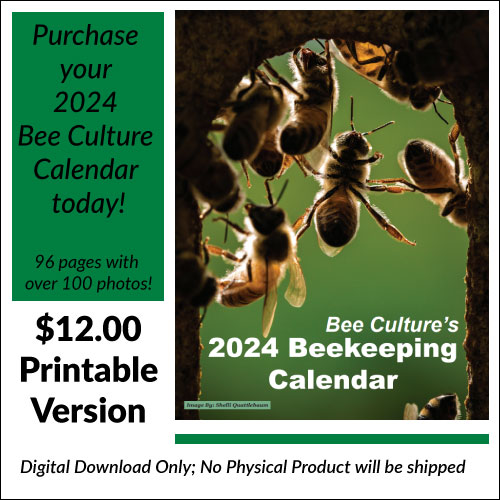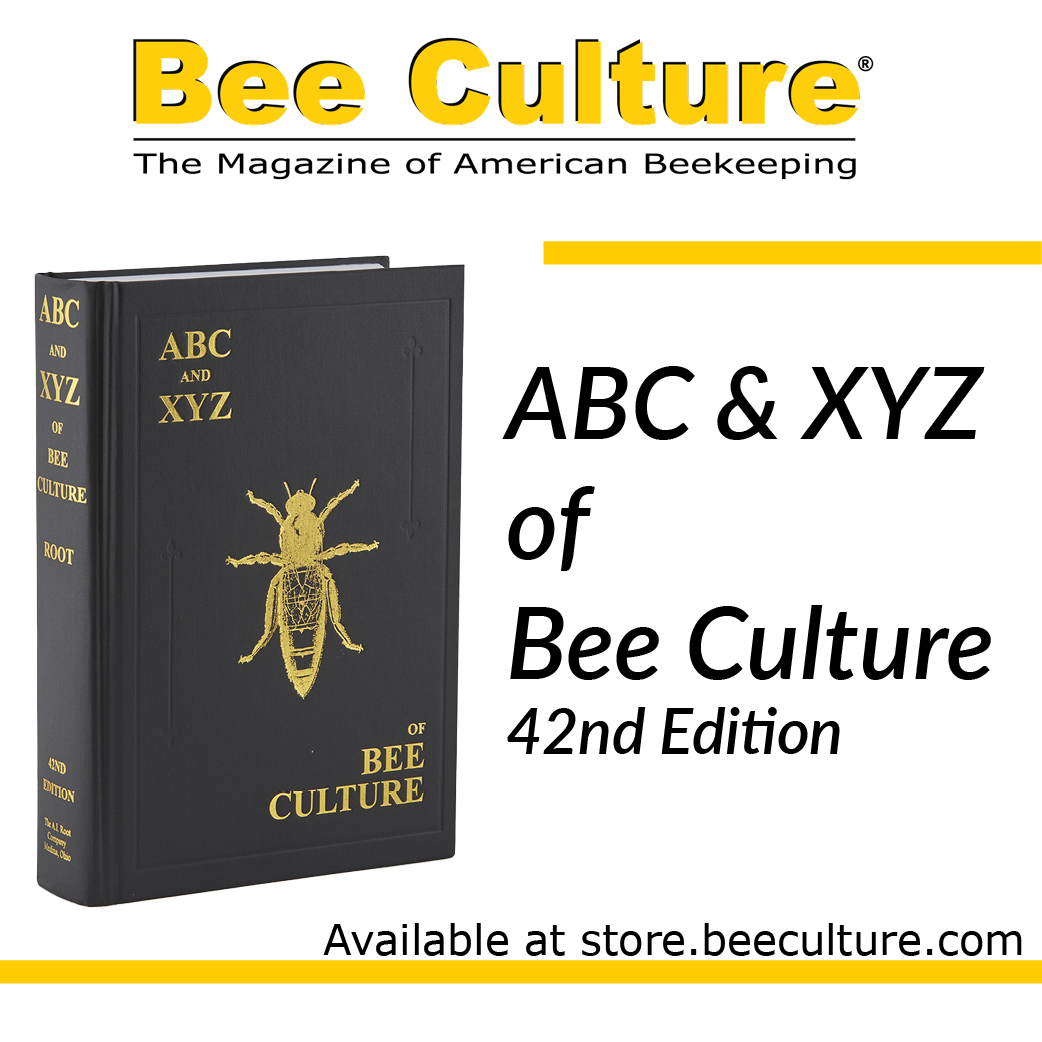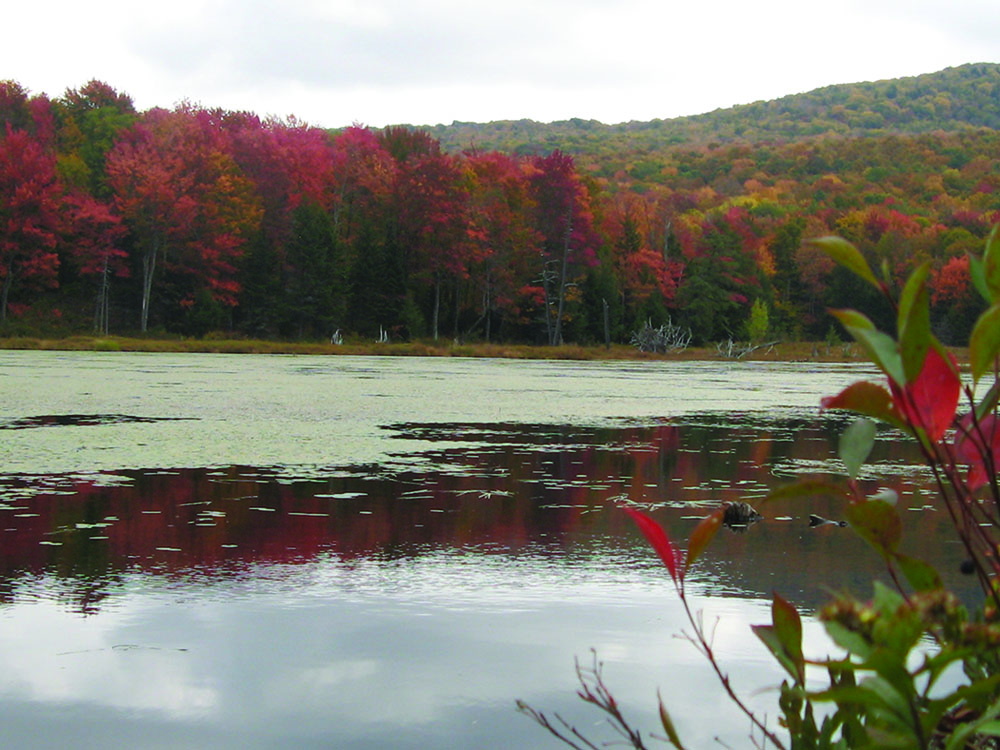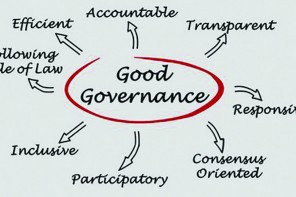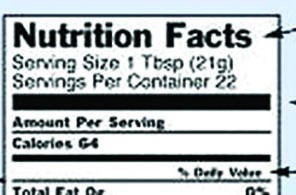A Bee Problem We Can Potentially Solve – Part 3
by Ross Conrad
The dramatic increase in the earth’s atmospheric carbon levels and the accompanying weather changes are part of a natural cycle that was described by Hamaker and Weaver in 1982 and is fully supported by all available scientific evidence. As plants and trees grow they remove and sequester atmospheric carbon. Over time so much carbon is removed from the atmosphere that the earth starts to cool down triggering an ice age. As the glaciers grow and move from the poles toward the equator, they cover and destroy huge areas of forest and vegetative growth releasing significant amounts of CO2 into the atmosphere. As the levels of carbon dioxide in the atmosphere climb, the overall temperatures of the planet increase eventually leading to a global warming period and a resulting retreat in the glacier ice. As the glaciers melt, they leave behind ground up rocks that re-mineralize the soil helping to nourish plant life that grows in abundance with help from the warmer temperatures and abundance of carbon in the atmosphere. Over time the earth’s plants become so abundant and sequester enough carbon to trigger another ice age and the cycle repeats over again.
The difference today is that the increase in atmospheric carbon we are experiencing is a result of human civilization removing it from deep in the ground and burning it in the form of oil, coal and natural gas. Thus, the atmospheric carbon buildup that normally takes place over thousands of years, has occurred in just a few hundred years and regrettably most plants and animals are simply not able to evolve and adapt fast enough to survive the major shift this is causing in our climate.
While the gathering of nations in France to address greenhouse gas emissions and climate change issues known as COP21 resulted in some progress, it did not come close to reaching an agreement that is going to quickly reduce atmospheric carbon to a significant degree any time soon. Things are bad and they’re going to get worse before they get better. As a result, I am thinking about how to prepare for a significant increase in the kind of unpredictable weather events we have witnessed in the past decade.
Climate risk
Researcher and farmer, Laura Lengnick points out in her book Resilient Agriculture: Cultivating food systems for a changing climate, that changing weather patterns have created a new type of risk for agriculture that scientists call climate risk. Climate risk is defined as the increased uncertainty created by increasingly variable patterns of temperature and precipitation and in increase in frequency and intensity of severe weather events associated with climate change. Part of the unpredictability of climate change is that changes are not uniform throughout the world, within various countries, or even in specific regions. The situation is further complicated by the fact that in some areas, the weather patterns have always been fairly unpredictable.
Exposure
To effectively evaluate the degree of your climate risk as a beekeeper you will want to consider your degree of exposure. Your degree of exposure will have a lot to do with the area where your bees are kept. For example, according to Lengnick, “Heat waves are projected to increase throughout most of the United States, and droughts are likely to become more intense in the Southwest. The growing season will continue to lengthen, increasing by as much as a month in many parts or the nation and as much as two months in the West, while the number of frost days will decline by twenty to thirty days in most of the nation and by even more in the West. Dry periods will lengthen, with the greatest increases expected in the Northwest, Southwest and southern Great Plains, and hot nights are expected to increase by more than eighty per year across the southern U.S. by the end of the century.”
Lengnick goes on to say “There will be more winter and spring precipitation in the northern part of the U.S. and less precipitation in the Southwest, while Summer and Fall precipitation is likely to remain about the same or decrease in most regions. Both the frequency and intensity of heavy rainfall events are projected to increase.”
Sensitivity
The amount of climate risk we face as beekeepers is also a factor of the degree that our beekeeping operation may be impacted, either positively or negatively by climate related effects. For example, do you have beeyards in a flood plain or exposed to prevailing winds? Is your operation already subject to existing stresses that may be aggravated by projected climate changes such as limited water supplies or a business that is struggling financially?
Will your level of exposure potentially push demand for resources above the level of supply? The huge increase in demand for nucs and package bees has already created shortages in many areas of the country. How dependent are you on local farms in order to produce a honey crop each year? Are your bees dependent upon a single crop for the majority of their forage? Are your bees in an area where the available forage is already marginal in order to keep hives well fed and provide excess honey for harvest? Could water supplies in your area drop below the level needed for hives to maintain themselves? How many months or years could your beekeeping business continue without any income? Thinking about the minimum resource conditions required, before the growth and development of your hives declines, will give you a good idea of your climate risk sensitivity.
Adaptive capacity
Once we have an idea of our climate risk and level of sensitivity we can evaluate our ability to cope with the challenges ahead through adaptation. The vulnerability of one’s beekeeping operation to climate disruption will be a combination of the potential impact of changes to our situation and the capacity of our operation to adapt. Generally speaking, the adaptive capacity of large commercial and migratory beekeeping operations to produce honey or pollination services regardless of local resource conditions, arises from the management of large numbers of bees and apiary locations, purchased inputs such as mite treatments, antibiotics and sugar syrup, and government subsidies (in the form of education, research, development and extension, insurance programs, and agricultural labor exemptions)
In contrast, the adaptive capacity of less vulnerable and potentially more sustainable beekeeping operations is typically a result of managing smaller numbers of hives and locations, most inputs produced by the apiary itself, natural pest and disease suppression through beekeeper management and genetic tolerance, and social capital (such as direct markets) to produce high value products adapted to local resource conditions. The choices that beekeepers routinely make about the assets they manage – people, apiary locations, numbers of hives, kinds of honey bees, infrastructure, inputs and finances – will largely determine the ability of the apiary to sustain production and keep bees alive and healthy under challenging climate conditions.
As beekeepers, we have to recognize that they occupy a place, which has a unique combination of ecological, social and economic conditions. These conditions will impact our capacity to act and develop new abilities to learn, plan and adapt to changing climate conditions, all of which may increase costs and will likely require a high level of financial and emotional flexibility. This creates unique place-based opportunities that enhance an apiary’s capacity to adapt.
Successful beekeeping management under changing and unpredictable climate conditions will tend to be determined by a willingness and ability to take action to reduce climate risk. Once the apiculturist decides to take action, access to various options and existing knowledge for effective action is the final component of adaptive capacity. For example the ability of a beekeeper to move their hives into areas primarily surrounded by ecologically-based agriculture (e.g. bio intensive, organic, biodynamic, permaculture) that tends to raise a wide diversity of crops that bees may forage on, is an example of the adaptive capacity to respond to climate related nutritional stress in the beeyard. The development of high value, direct retail specialty markets that reduce climate risk through improved profitability and the development of social capital can also help beekeepers to respond to, and recover from, climate related damages.
The resilient beekeeper
In the context of adapting to a changing climate, resilience is defined as the ability of a social or ecological system to absorb disturbances while retaining the same basic structure and ways of functioning, as well as be able to maintain the capacity of self-organization, and the capacity to adapt to stress and change. (Parry, M.L., 2007) The capacity of a system (or in this case a beekeeping operation) to cope with, recover from, and adapt to stress and change reflects adaptive capacity. The capacity to buffer a beekeeping operation from the impacts of a changing climate, results in resilient beekeeping.
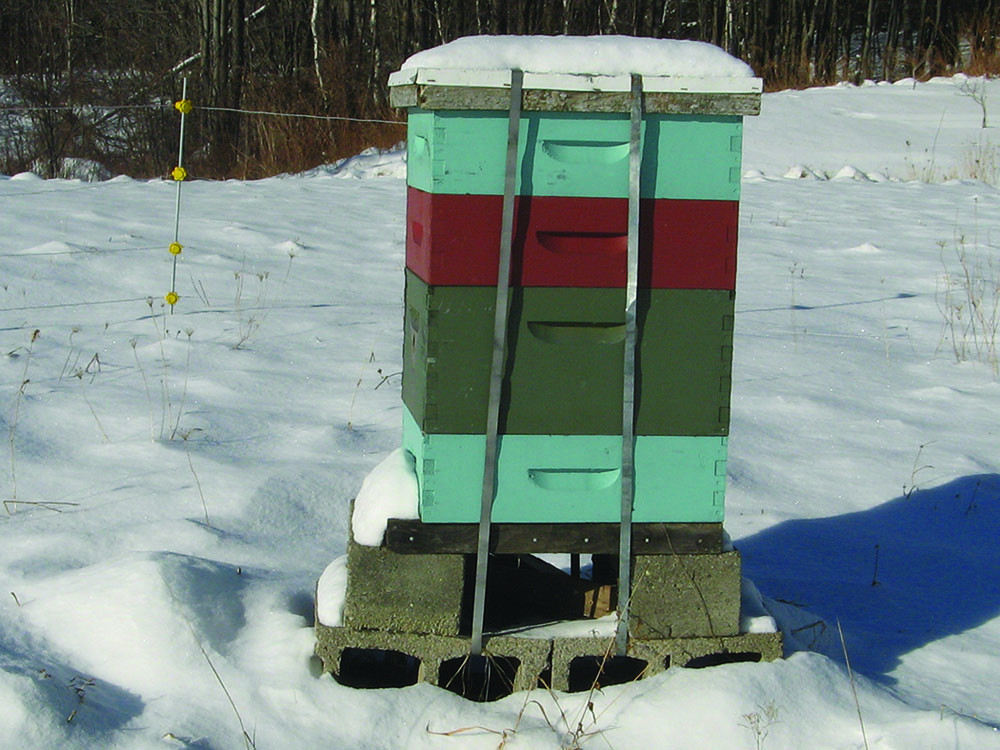
This hive is located at a high elevation in the Green Mountains of Vermont and has no wind break to protect it from exposure to strong winds on a regular basis. Instead, it has been strapped to four concrete blocks at the base which help prevent the hive from being blown over.
Since resilience thinking is focused on the behavior of a system (in this case a beekeeping operation), since the scale of one’s operation is an important consideration in assessing and managing for resilience. While the number of hives managed by the beekeeper will tend to define the scale for cultivating resilience in the apiary, resilient thinking also encourages consideration of related issues such as the amount of available forage to support a given number of hives, or state and federal regulations which often have a direct influence on performance, activities and the apiary as a whole.
Diversity
There are two forms of diversity that are important to resilience: functional diversity and response diversity. Generally speaking, diversity results in redundancy which tends to make systems more stable when facing stress. An example of functional diversity is having a wide variety of honey bee races represented in your apiary or having a hand-crank manual extractor on hand when the power is out or the motor on the extractor is broken. An example of response diversity is a beekeeping business with a wide range of products and markets so that dramatic and sudden shifts in consumer preferences can be absorbed more easily. A diversified apiary operation or business that can design each part of its enterprise to relative self-sufficiency by limiting interactions between them promotes the strength and sustainability of the whole. Management strategies that emphasize efficiency over response diversity tend to do so at the expense of resilience. (Lengnick 2015)
Transformation
While resilience practices can be used to maintain an existing operation or system, they can also be used to help guide transformation to new structures, functions and purposes. Practicing resilience tends to bring up important questions about the desirability of a system or process. Does the current system meet management goals and objectives? By stepping back and examining the structure and function of a beekeeping operation (as well as underlying assumptions and rationalizations), ways to improve performance, reduce costs, or increase benefits may become visible. If the beekeeping business or operation is performing well, the beekeeper’s goal should be to consider enhancing its adaptive capacity; if it is not fulfilling its purpose well, resilience practices can be used to transform the operation to something more desirable. (Meadows 2008)
Beekeepers who choose to manage their apiaries for general resilience will work to enhance three key system behaviors: 1) Response Capacity: the ability to respond to disturbances quickly and effectively; 2) Recovery Capacity: the ability to restore damage to the apiary relatively quickly and; 3) Transformational Capacity: the ability to transition to a new identity or purpose when necessary.
Strategies for adapting to climate change used by beekeepers are likely to fall along a resistance, resilience and transformation continuum. Actions that protect the existing operation from climate effects are referred to as resistance strategies (e.g. planning for likely weather related hazards by moving hives away from rivers and streams to high ground). Resilient strategies will improve the operation’s ability to cope with and recover from climate-related stresses, shocks and disturbances (e.g. developing a back-up electrical supply, or stocking up on critical apiary materials that might prove difficult to obtain during a catastrophic weather-related disturbance). Transformation strategies facilitate the transition of a beekeeping operation to one that is more resilient to current or projected climate conditions. Typically, some characteristics of all three strategies are found in resilient systems. Taken as a whole, this range of management approaches can be seen as the beginning of a climate change resilience tool-kit for beekeepers.
Additional Resilience Considerations
Weather has always been an important factor in beekeeping, but climate risk – and the damage that may be caused by increased weather variability and extreme weather events associated with climate change – is a unique hazard that is likely to increase in intensity for the rest of this century. Ironically publically subsidized programs that insure against climate risk, while not requiring investment in climate adaption strategies, can act as a barrier to the enhancement of the climate adaption capacity of the beekeeping industry.
Since conditions of climate change exposure, sensitivity and adaptive capacity vary across the United States, we are likely to see climate vulnerability emerge in regional patterns. Sustainable and resilient beekeepers that are successful in navigating these challenges will have to do more than simply keep their bees alive through the Winter or produce lots of honey. Many will have to manage the production of their own inputs rather than seek them outside the apiary. This will mean learning how to keep bees well-nourished without having to regularly purchase sugar and syrup, how to control mites and diseases without having to use commercial treatments, how to maintain and increase hive numbers without having to regularly purchase packages or nucleus colonies, and receiving top dollar for hive products such as by selling directly to consumers rather than rely on insurance or agricultural foreign-labor programs to help manage costs.
Despite the recent increases in the number of new beekeepers, the beekeeping industry (and our agricultural industry in general) does not appear to be economically or environmentally sustainable. (Heller and Keoleian, 2003) Key indicators that support this position include the high rate of yearly colony losses, the low genetic diversity of the honey bee population in the U.S., the low profitability of beekeeping businesses generally, the age distribution of beekeepers, the wide proliferation of agricultural pesticides, and the fossil fuel intensity of the beekeeping industry. Similar issues are faced generally by the U.S. agriculture system, a system that operates under the assumption of a stable climate and an unlimited flow of global energy and resources to which the beekeeping industry is dependent upon. While we are working to bring our climate back into balance, rather than invest in trying to protect the beekeeping industry by resisting disturbances, we might be better off investing in the knowledge and assets that enhance the sustainability and resilience of U.S. beekeepers. This will likely mean changes in focus such as from optimum to robust; from efficient to redundant; from best practice to learn as you go; and from disposable to reduce, reuse, and recycle. In the meantime, for reasons outlined in last month’s article I will be avoiding industrial factory farmed food, and buying and eating ecologically produced food every chance I get.
Ross Conrad is the author of Natural Beekeeping, Revised and Expanded 2nd edition. He’ll be presenting at the 2016 WV Master Gardener Association’s Conference in Greenbrier County at the State Fair Grounds in Fairlea/Lewisburg on April 15-17, and leading an Organic Beekeeping class for beginners May 7-8 at Metta Earth Institute in Lincoln, VT. Call 802.349.4279 for information.
References:
Hamaker, J.D., The survival of civilization, (1982) Hamaker-Weaver Publishers
Heller, M.C. and Keoleian, G.A., Assessing the sustainability of the US food system: A life cycle perspective. Agricultural Systems, (2003) 76: 1007-1041
Lengnick, L., Resilient Agriculture: Cultivating Food Systems for a Changing Climate, New Society Publishers, (2015) Pg. 277
Meadows, D., Leverage Points: Places to Intervene in a System, Thinking In Systems: A Primer, Earthscan (2008)
Parry, M.L., et. al., Climate Change 2007: Impacts, Adaption and Vulnerability. Pg. 880 Contribution of Working Group II to the Fourth Assessment Report of the International Panel on Climate Change (ICC)




